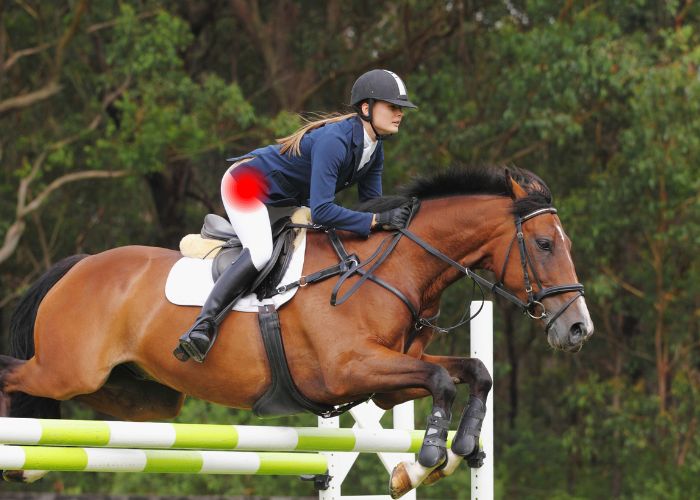What is a meniscus root tear?
The meniscus is a critical component of the knee structure, this crescent-shaped piece of rubbery cartilage sits between the upper femur and lower tibia in the knee joint and serves as a cushion between the bones absorbing the day-to-day impact of activity. A meniscus root tear occurs when one of the anchor points, located on either the front or back of the tibia (most often the back or posterior root), is damaged. These attachment points are crucial to holding the meniscus in place and providing stability to the surrounding architecture of the knee. The root of the meniscus prevents the meniscus from extruding (or spitting out) between the joint. This extrusion after meniscal root tear has been shown through biomechanical testing to result in the same impact as having the entire meniscus removed.
Without treatment, a root tear may lead to rapid deterioration of the cartilage in the knee. This can cause long-term problems with the function of the knee joint and may eventually lead to osteoarthritis. It is typically recommended to have a meniscal root tear repaired to prevent these problems and maintain the health of your knee joint. Candidacy for a meniscal root repair is a complex decision and highly dependent on healthy cartilage surfaces without high-grade arthritis. Dr. Ronak Mukesh Patel, orthopedic knee specialist, treats patients in Sugar Land, Pearland, and the Houston, Texas area, who have suffered a meniscus root tear and are in need of treatment.

Who is at risk of sustaining a meniscus root tear?
There are primarily two populations at risk for a meniscus root tear:
- The first at-risk population is athletes, especially those who participate in sports that require pivoting, abrupt directional changes, or contact sports. This condition is seen in those who play sports such as tennis, basketball, football, or soccer.
- The second at-risk population is older adults, in this group of individuals, wear and tear to the meniscal root anchor points can leave them prone to a degenerative meniscus root tear with little or no trauma. This type of degenerative injury can be related to kneeling or squatting. The risk of meniscus injury is higher for patients who are obese and seen more often in females.
What are the symptoms of a meniscus root tear?
Patients diagnosed with a meniscal root tear experience mild to severe pain in the knee that may have fluctuating periods of intensity. Typically, they can still bear weight on the injured knee but over 2-3 days swelling and stiffness increase and they may also experience some or all of the following symptoms:
- Pain in the back of the knee
- There may be a popping sensation when the tear takes place
- Pain may increase when twisting or rotating
- The range of motion may be significantly limited and the patient might have difficulty straightening the knee fully
- Patients may experience a “catching” sensation
- The condition may lead to instability or a feeling that the knee is “giving out”.
How are meniscal root tears diagnosed?
Tears in the meniscus root are often diagnosed with an initial physical examination and imaging tests. The examination will most often involve Dr. Patel feeling or palpating the knee and injury site, applying pressure, or moving the joint in specific ways to detect pain or discomfort. Dr. Patel may assess the patients range of motion by asking them to move or stretch in ways that specifically target the meniscus root to test for abnormalities or limitations.
What is the best treatment for a meniscus root tear?
Non-Surgical:
To manage symptoms of a meniscus injury non-surgical treatment options include:
- Rest and Ice: Resting the knee and avoiding activities that aggravate the condition can help reduce swelling, inflammation, and discomfort. Applying ice also serves to reduce inflammation and reduce pain.
- Compression: Wearing a wrap or bandage can help support the knee and reduce swelling.
- Nonsteroidal anti-inflammatory drugs (NSAIDs) such as naproxen or ibuprofen can help manage pain and ease inflammation.
- Corticosteroid injections: in cases where NSAIDs are not effective, corticosteroid injections into the knee joint can reduce pain and inflammation.
- Platelet-rich plasma (PRP) injection
- Physical Therapy: Physical therapy focusing on stretching and strengthening may help to improve strength, flexibility, and range of motion.
It is important to note that these non-surgical interventions may not be sufficient to repair the torn meniscus root and surgery may be necessary to resolve the tear. Non-surgical intervention is typically reserved for older patients and high-grade cartilage damage or osteoarthritis.
Surgical Treatment:
Surgical treatment options for a meniscus root tear depend on the patient’s age, weight, cartilage damage, osteoarthritis, activity level, medical comorbidities, and prior non-surgical treatment. Overall, the goal of surgical intervention is to repair or remove the damaged tissue and restore the normal function of the knee joint.
- Meniscus root repair involves advanced, complex arthroscopic techniques to suture and re-anchor the root to its anatomic position. This procedure is best suited for patients who are not yet experiencing degenerative joint symptoms.
- Another surgical option is partial meniscectomy, which involves removing the damaged portion of the meniscus. This procedure is typically recommended for larger or more unstable tears that cannot be repaired or for patients already experiencing symptoms of arthritis.
Meniscus Root Tear Specialist

The meniscus in the knee has a root, which keeps the meniscus anchored in it’s proper position. If the meniscus root is injured or torn, the meniscus can extrude outside of the knee, causing pain and eventually, knee instability. Meniscus root tear specialist, Doctor Ronak Mukesh Patel, provides diagnosis as well as surgical and nonsurgical treatment options for patients in Houston, Sugar Land, and Pearland, TX who have injured or torn the root of their meniscus. Contact Dr. Patel’s team today!








